Aspiring chicken-keepers and hatch-aholics rejoice! Gail Damerow has hit it out of the literary chicken park yet again with her latest book: Hatching & Brooding Your OwnChicks.
Just one year after publishing The Chicken Encyclopedia, Damerow delivers another must-have reference guide for poultry-keepers that reads like a novel from your favorite teacher, complete with illustrations and photos worthy of a coffee table book.
WHICH CAME FIRST?
Given that most poultry keepers begin their adventures with baby chicks, it makes sense that this book covers the basics of selecting andsourcing baby chicks and how to care for chicks before addressing the intricacies of hatching eggs. All of the essentials of chick rearing are covered from brooder features to broody hens and from bedding, watering and feed options to feathering-out, (stages of feather growth) camping out (the when and how of bringing chicks outdoors) and beaking out (the wasteful scooping of feed onto the ground from a feeder via beak). Damerow addresses the topics of brooding and hatching chicks of all varieties, geese, guinea fowl, ducks turkeys and chickens, without assuming any prior experience of the reader. The book is peppered with “Talking Fowl” sidebars, which are helpful, mini glossaries of terms used in that section.
Both halves of the book contain sections dedicated to health issues commonly encountered when acquiring and hatching baby chicks. These sections are written in layman’s terms, without being too technical even for the average 4-H student.
THE EGG
A few of the thoroughly examined topics in the second half of the book include: incubator selection and operation, the anatomy of an egg, sourcing fertile eggs and assessing hatch failures. Even with a great deal of hatching experience, I have plenty to learn about the finer points of incubation and this book has added enormously to my depth of understanding of the process. I recently experienced a very poor hatch, despite using the most reliable incubators available. Damerow’s chapter, “What Went Wrong” is extremely useful in assessing the wide range factors that may have contributed to the failure. Of particular interest to me was the “Breakout Analysis” section, which I call an “eggtopcy,” where she details the procedure for opening and studying an egg that has failed to hatch for clues as to the cause. Riveting stuff.
OLD WIVES’ TALES, AKA: SCREWPOT NOTIONS
Having spent a good deal of my time on my Facebook page and blog trying to debunk commonly parroted chicken-keeping myths and old wives’ tales, I particularly enjoy a section at the end of the book entitled “Screwpot Notions.” In it, Damerow detonates thirteen screwball/crackpot bombs that are often tossed around lightly on the Internet. You GO, girl!
Damerow writes: “Some of these ideas do contain a kernel of truth, which seems to lend them a modicum of credibility. Most of them, however, either have never been scientifically proven to be true or have been demonstrated to be decidedly false.” She goes on to caution against advice found on the Internet without verifying the information by several, reliable websites. “If the wording is identical on every website you consult, keep looking-once something is posted online, other sites will copy it, whether it’s accurate or not.”
My favorite Screwpot Notion given a well-deserved smack-down by Damerow is: “You can prevent or cure coccidiosis by feeding (pick one) herbs, garlic, vinegar, milk or yogurt.” She is emphatic in her response to this absurdity: “No. No. No. No. And no. These notions are dangerous and can jeopardize the health, and lives, of your hatchlings. Certain herbs, as well as vinegar and yogurt, may be used in moderation to enhance the immunity and overall health of poultry. But too much garlic can cause anemia and therefore is hazardous to their health. Milk, in more than minor quantities, causes diarrhea, which is not a healthful condition in baby birds, especially if they are already sick.
Before modern drugs became available, milk sometimes was used as a flush to induce diarrhea to clean out the intestines of poultry infected with coccidiosis. Today, instead of spreading coccidial protozoa from the loosened bowels of infected birds, we have a variety of drugs called coccidiocides that destroy the parasites and reliably cure birds of the disease. A young bird with coccidiosis is a seriously ill bird. Don’t gamble with its life by treating it with ineffective alternative ‘natural’ products.” (emphasis added)
I am thrilled that Storey Publishing contacted me to review this book. I thoroughly enjoyed it and know that I will refer to it often in my hatching adventures. The only thing missing from it is the Surgeon General’s warning on the back cover stating that this book may ignite a hatching addiction, for which there is no cure.
Kathy Shea Mormino
Affectionately known internationally as The Chicken Chick®, Kathy Shea Mormino shares a fun-loving, informative style to raising backyard chickens. …Read on


shop my SPONSORS
Aspiring chicken-keepers and hatch-aholics rejoice! Gail Damerow has hit it out of the literary chicken park yet again with her latest book: Hatching & Brooding Your OwnChicks.
Just one year after publishing The Chicken Encyclopedia, Damerow delivers another must-have reference guide for poultry-keepers that reads like a novel from your favorite teacher, complete with illustrations and photos worthy of a coffee table book.
WHICH CAME FIRST?
Given that most poultry keepers begin their adventures with baby chicks, it makes sense that this book covers the basics of selecting andsourcing baby chicks and how to care for chicks before addressing the intricacies of hatching eggs. All of the essentials of chick rearing are covered from brooder features to broody hens and from bedding, watering and feed options to feathering-out, (stages of feather growth) camping out (the when and how of bringing chicks outdoors) and beaking out (the wasteful scooping of feed onto the ground from a feeder via beak). Damerow addresses the topics of brooding and hatching chicks of all varieties, geese, guinea fowl, ducks turkeys and chickens, without assuming any prior experience of the reader. The book is peppered with “Talking Fowl” sidebars, which are helpful, mini glossaries of terms used in that section.
Both halves of the book contain sections dedicated to health issues commonly encountered when acquiring and hatching baby chicks. These sections are written in layman’s terms, without being too technical even for the average 4-H student.
THE EGG
A few of the thoroughly examined topics in the second half of the book include: incubator selection and operation, the anatomy of an egg, sourcing fertile eggs and assessing hatch failures. Even with a great deal of hatching experience, I have plenty to learn about the finer points of incubation and this book has added enormously to my depth of understanding of the process. I recently experienced a very poor hatch, despite using the most reliable incubators available. Damerow’s chapter, “What Went Wrong” is extremely useful in assessing the wide range factors that may have contributed to the failure. Of particular interest to me was the “Breakout Analysis” section, which I call an “eggtopcy,” where she details the procedure for opening and studying an egg that has failed to hatch for clues as to the cause. Riveting stuff.
OLD WIVES’ TALES, AKA: SCREWPOT NOTIONS
Having spent a good deal of my time on my Facebook page and blog trying to debunk commonly parroted chicken-keeping myths and old wives’ tales, I particularly enjoy a section at the end of the book entitled “Screwpot Notions.” In it, Damerow detonates thirteen screwball/crackpot bombs that are often tossed around lightly on the Internet. You GO, girl!
Damerow writes: “Some of these ideas do contain a kernel of truth, which seems to lend them a modicum of credibility. Most of them, however, either have never been scientifically proven to be true or have been demonstrated to be decidedly false.” She goes on to caution against advice found on the Internet without verifying the information by several, reliable websites. “If the wording is identical on every website you consult, keep looking-once something is posted online, other sites will copy it, whether it’s accurate or not.”
My favorite Screwpot Notion given a well-deserved smack-down by Damerow is: “You can prevent or cure coccidiosis by feeding (pick one) herbs, garlic, vinegar, milk or yogurt.” She is emphatic in her response to this absurdity: “No. No. No. No. And no. These notions are dangerous and can jeopardize the health, and lives, of your hatchlings. Certain herbs, as well as vinegar and yogurt, may be used in moderation to enhance the immunity and overall health of poultry. But too much garlic can cause anemia and therefore is hazardous to their health. Milk, in more than minor quantities, causes diarrhea, which is not a healthful condition in baby birds, especially if they are already sick.
Before modern drugs became available, milk sometimes was used as a flush to induce diarrhea to clean out the intestines of poultry infected with coccidiosis. Today, instead of spreading coccidial protozoa from the loosened bowels of infected birds, we have a variety of drugs called coccidiocides that destroy the parasites and reliably cure birds of the disease. A young bird with coccidiosis is a seriously ill bird. Don’t gamble with its life by treating it with ineffective alternative ‘natural’ products.” (emphasis added)
I am thrilled that Storey Publishing contacted me to review this book. I thoroughly enjoyed it and know that I will refer to it often in my hatching adventures. The only thing missing from it is the Surgeon General’s warning on the back cover stating that this book may ignite a hatching addiction, for which there is no cure.



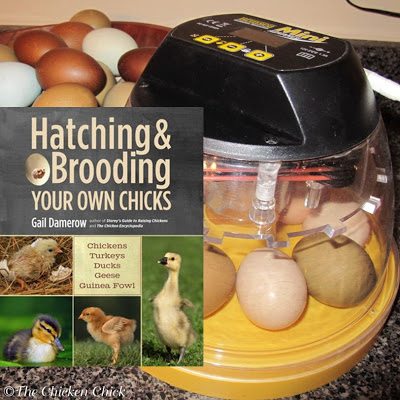

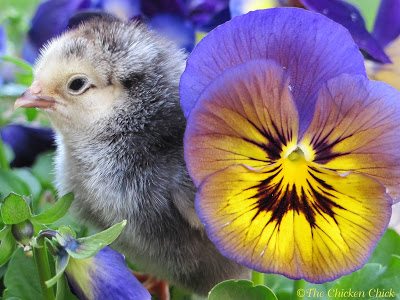
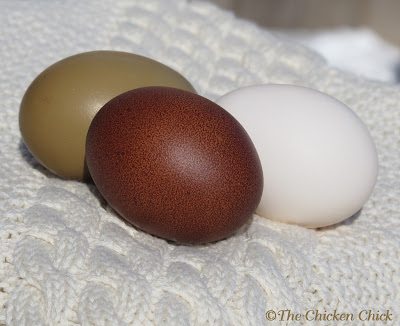
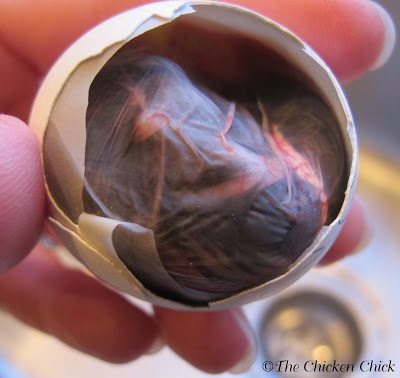
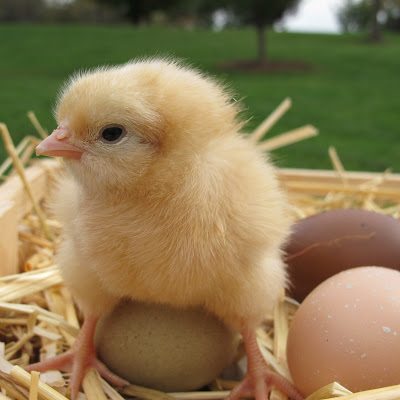
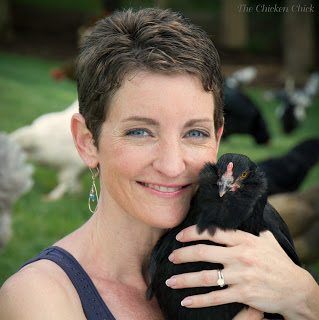

























I'm in it to win! =)
I have been wanting one of these! Thank you for the chance to win one!
I have learned a lot about chickens and their babies from a sweet young girl in my town. She has been raising them for a while and I would love to win a Brinsea incubator to give to her so she can continue building on her dream of building her chicken farm business. I would love to be a part of her dream!
You're a good friend to enter for her. ♥
It's on the list, Martha! I just need more hours in a day to get to it all. :)